While lakes have a standard definition and a set of common features, some still stand out with their unique characteristics. Most of the Earth’s lakes contain freshwater, while a few have high salinity, making each of these lakes have diverse sets of complex ecosystems. Despite these standards, some lakes still manage to be different and peculiar. Some can be so bizarre that people perceive them as weird lakes, while others can be so stunningly magnificent that they are labeled more as distinctive rather than quirky. If you are looking for a different kind of lake experience, read on as we list down and explore the 15 most unique lakes in the world and where to find them.
Discover the 15 Most Unique Lakes in the World
1. Dead Sea, Israel and Jordan
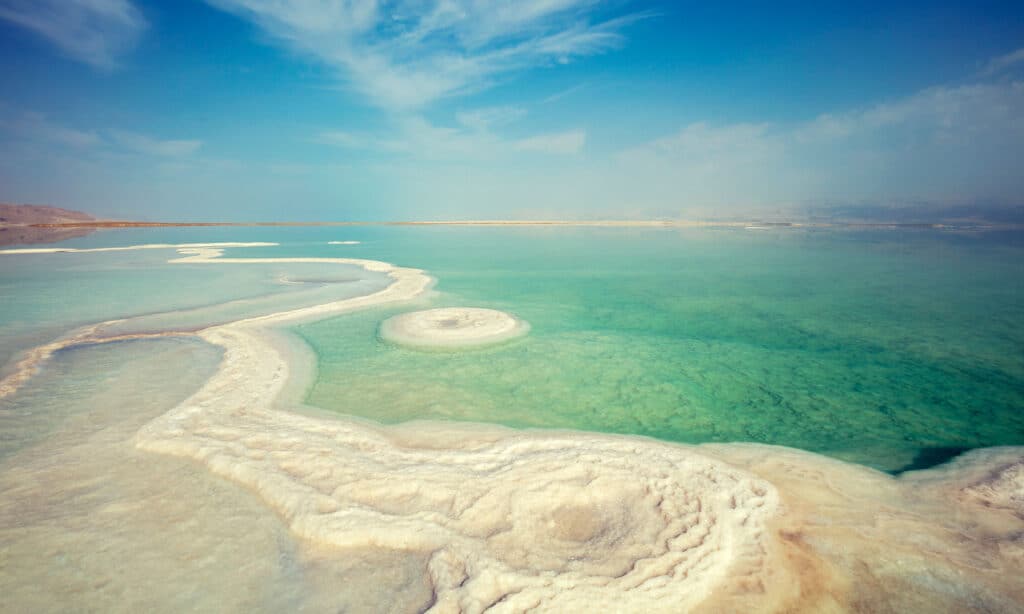
Popular for its high salinity, the Dead Sea sits 1,412 feet below sea level.
©iStock.com/vvvita
The Dead Sea, located between Jordan and Israel, is known worldwide because of its very salty water and its incredibly high buoyancy. Tourists come from all over the world to swim in the lake’s waters (which feels more like floating than swimming) and benefit from its therapeutic effects. Because the Dead Sea is high in salt minerals, it has health benefits such as strengthening the immune system and improving skin health. The Dead Sea is the world’s lowest lake, at 1,412 feet below sea level. Its water is 10 times saltier than the ocean and the lake’s high salinity prevents any living entity from surviving, thus its name.
2. Lake Hillier, Australia
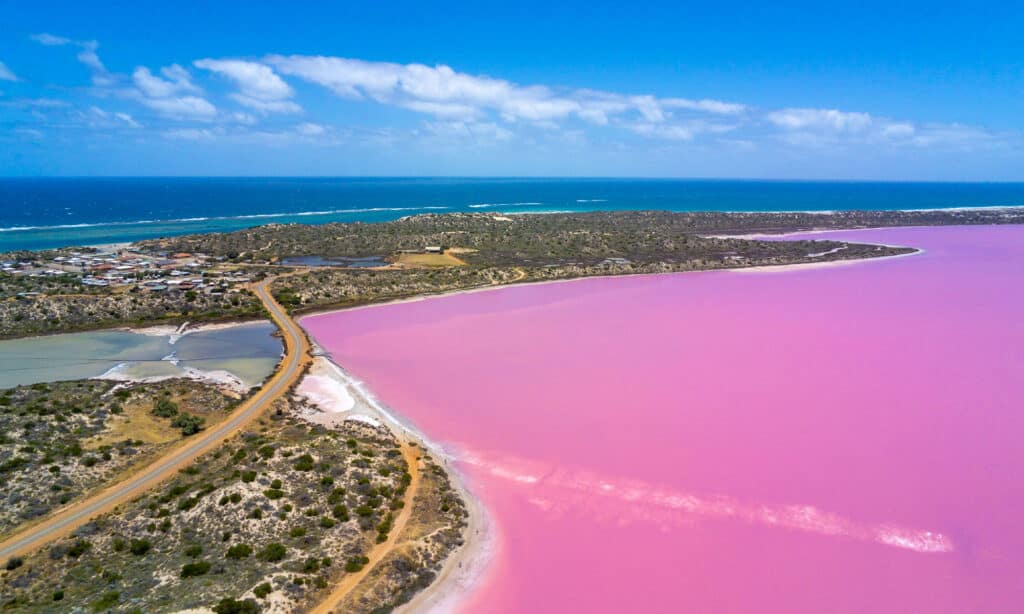
The water in Lake Hillier is a highly unusual vibrant pink.
©iStock.com/MXW Stock
A saline lake located in Western Australia, Lake Hillier is often called the Pink Lake and is remarkable for its vibrant pink hue. The water in this salt lake is pink, which is an amazing natural phenomenon. The brilliant color remains constant even when the water is placed in a vessel. The organism Dunaliella salina and a considerable level of brine shrimp are responsible for its pink color. The color isn’t always pink, as it varies depending on temperature, salinity, and light.
3. Jellyfish Lake, Palau
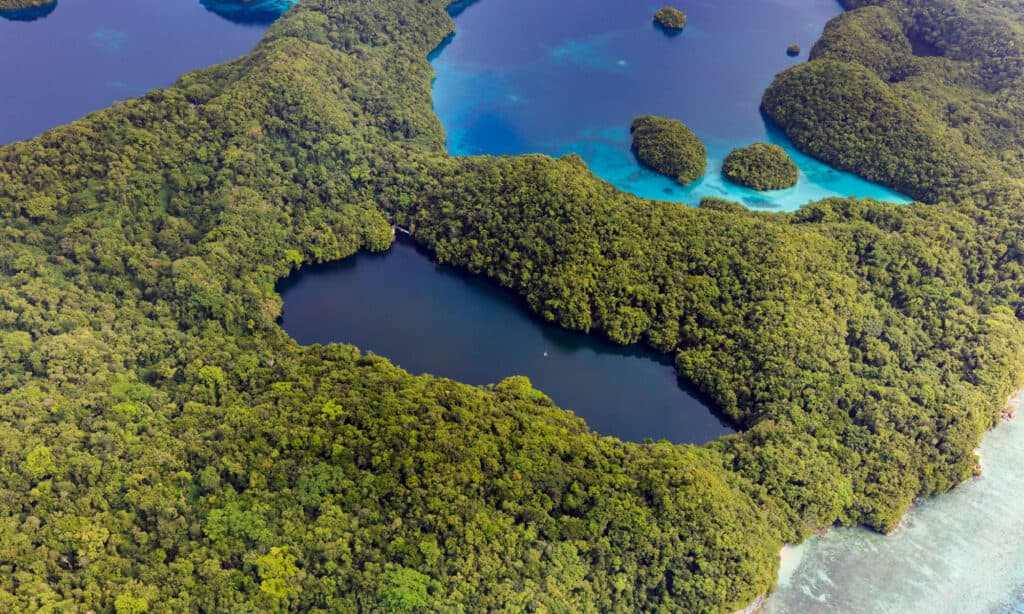
Measuring 1,510 feet long, Jellyfish Lake is home to gentle jellies.
©iStock.com/Norimoto
Jellyfish Lake is a small marine lake with an average depth of 30 meters, measuring 1,510 feet long and 520 feet wide. Although jellyfish are notorious for inflicting painful stings on divers who approach too closely, Jellyfish Lake is home to more gentle jellies. Millions of golden jellyfish swarm through the waters of this little inland lake, but it’s still a tremendous and often recommended place to swim and snorkel. The relative seclusion of this 12,000-year-old lake has enabled its species to evolve differently than closely similar species in surrounding lagoons.
4. Exploding Lakes, Democratic Republic of the Congo / Rwanda / Cameroon
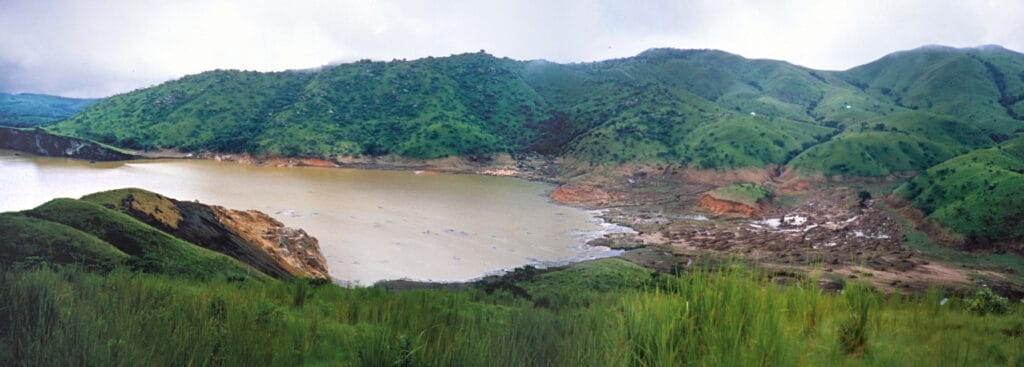
Also called “killer lakes,” the exploding lakes of
Africa
has taken thousands of lives.
©United States Geological Survey, Public domain, via Wikimedia Commons – License
The exploding lakes of Africa are the only three exploding lakes in the world. They are sometimes called “killer lakes” because of their lethal abilities to suffocate surrounding residents and wildlife. Two of these exploding lakes have already shown their capability to produce a huge calamity. In the 1980s, both lakes (Lake Nyos and Lake Monoun) released a massive cloud of poisonous gas that suffocated thousands of people and livestock. These explosions are called limnic eruptions, which happen when dissolved carbon dioxide erupts from deep lake waters, generating a gas cloud that can suffocate wildlife, cattle, and humans. There are only three exploding lakes in the world: Lake Kivu (Rwanda and the Democratic Republic of the Congo), Lake Nyos (Cameroon), and Lake Monoun, also located in Cameroon.
5. Crater Lake, Oregon, USA
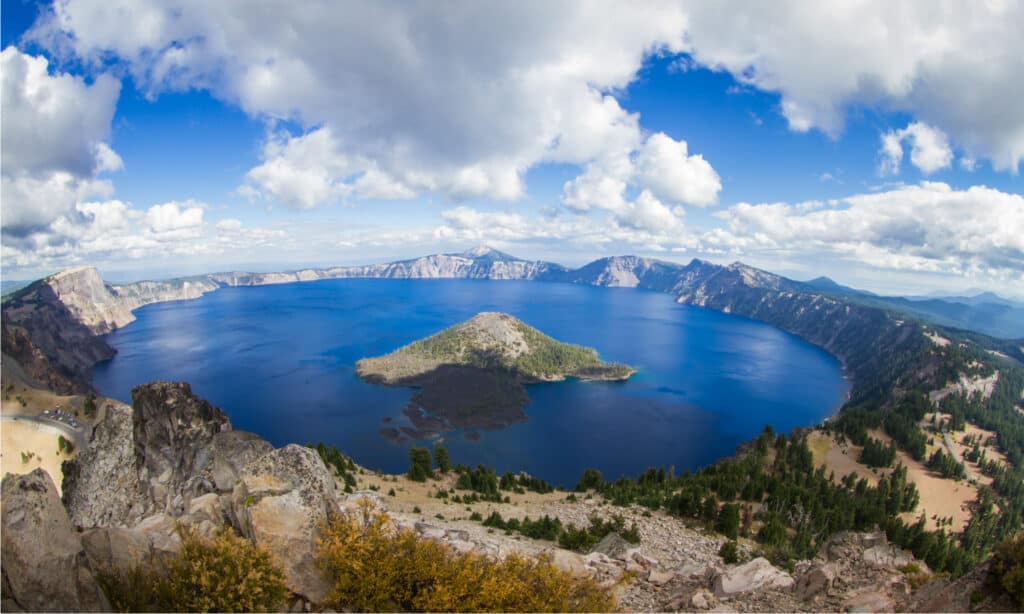
Regarded as one of the most beautiful lakes in the world, Crater Lake is the deepest lake in the United States.
©Wollertz/Shutterstock.com
Crater Lake is the ninth deepest lake globally, the deepest in the entire United States, and the second-deepest lake in North America. Crater Lake is widely regarded as one of the world’s most beautiful lakes and the most magnificent crater lake. Its waters are reputed to be one of the purest on the planet. It’s a crater lake, just like its namesake, created by Mount Mazama’s collapse 7,500 years ago. The lake contains no other debris or salt deposits because it has no other openings or streams via which water can enter, retaining the water’s beautiful hue.
6. Spotted Lake, Canada
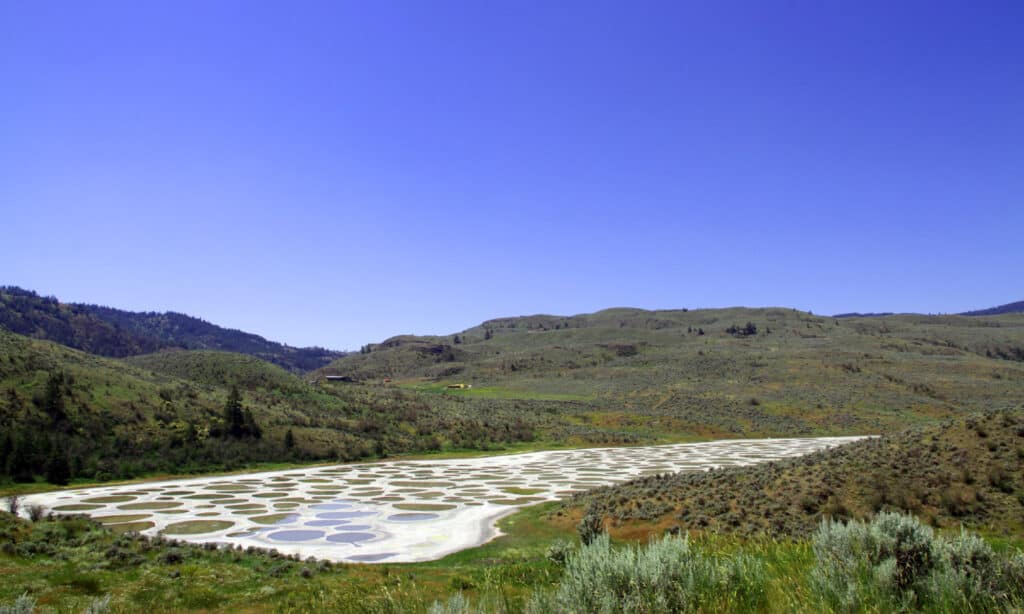
Spotted Lake’s mineral deposits make it appear like polka-dotted pool in the summer.
©iStock.com/BrendanHunter
Spotted Lake is a saline lake in Canada that appears to be any tiny body of water in the fall. The lake, however, becomes a colorful, polka-dotted pool in the summertime. The residual minerals drop into hundreds of little ponds that you can stroll through as the majority of the water evaporates. The mineral deposits, which are around 25 feet deep on average, take on a green, yellow, orange, or blue color.
7. Lake Kaindy, Kazakhstan

Located in Kazakhstan’s Tien Shan mountains, Lake Kaindy has dazzling turquoise waters.
©iStock.com/Ozbalci
Lake Kaindy in Kazakhstan looks like a lake pulled out from a fairy tale. Located in Kazakhstan’s Tien Shan mountains, the lake has a bizarre “sunken forest” with enormous spruce trees sprouting out of its dazzling turquoise waters. The lake’s origins, on the other hand, are less fairytale-like. The massive limestone landslide precipitated by the 1911 Kebin earthquake, which took more than 450 lives, created the 1,300-foot-long Lake Kaindy. Visitors and divers go to Lake Kaindy today to take in the enigmatic yet beautiful vistas above water and explore the equally magnificent underwater surroundings.
8. Lake Baikal, Russia
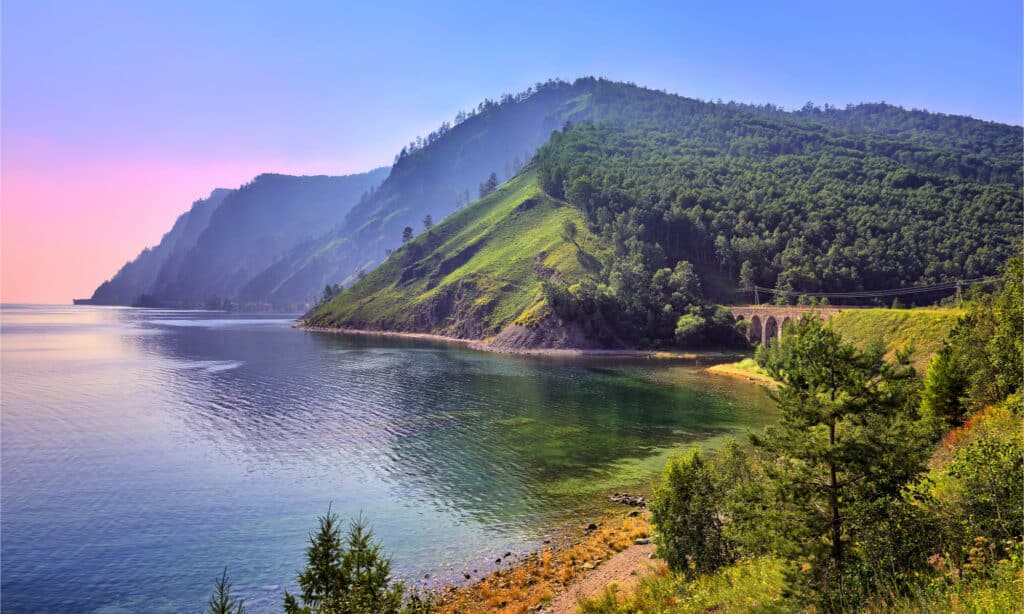
Lake Baikal is the deepest lake in the world.
©Nikitin Victor/Shutterstock.com
Even though Lake Baikal is the world’s deepest lake, this massive volume of water freezes in the winter. Lake Baikal is the oldest lake globally, having been formed 25 million years ago. Situated in Siberia, Russia, the lake holds 20% of the world’s unfrozen freshwater. Hundreds of different species live in the lake, including the world’s only freshwater seals. Lake Baikal is one of the clearest lakes on the planet, but it can sometimes produce thick sheets of ice that look spectacular and out of this world.
9. Grüner See, Austria
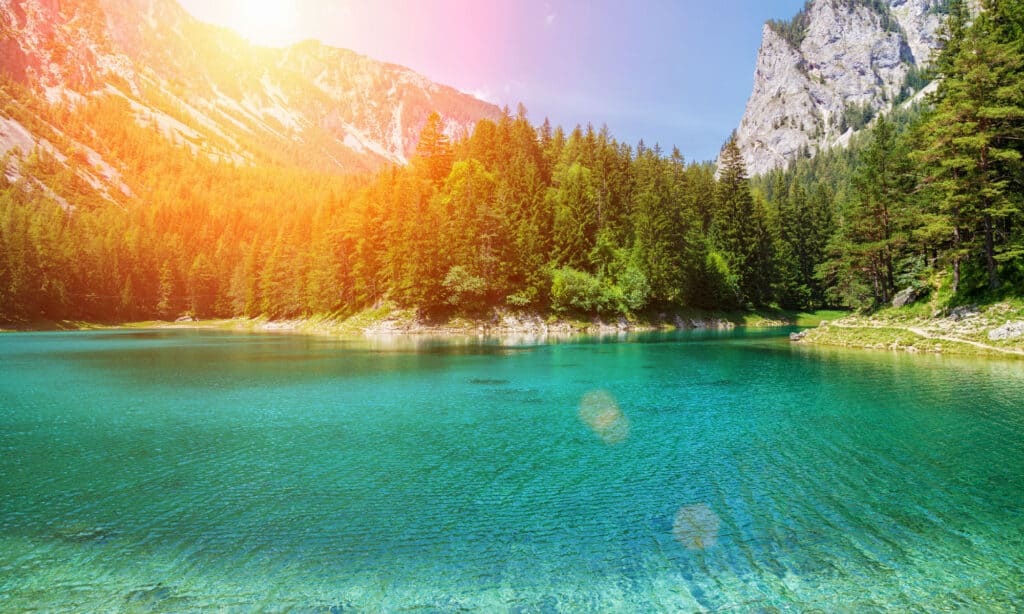
Also known as the Green Lake, the Grüner See is located in Austria.
©iStock.com/AND-ONE
The Grüner See (Green Lake) is a lake in Austria, named after its emerald-green water bordered by forests and three mountains. Because the area is virtually entirely dry when the alpine snow is frozen in the winter, it is primarily used by hikers. However, when the melting snow streams down the mountain in the spring and summer, the water level rises and the lake “appears,” wherein divers can witness strange underwater sights such as park seats, tree trunks, and grassy walks.
10. Tricolored Lakes, Indonesia
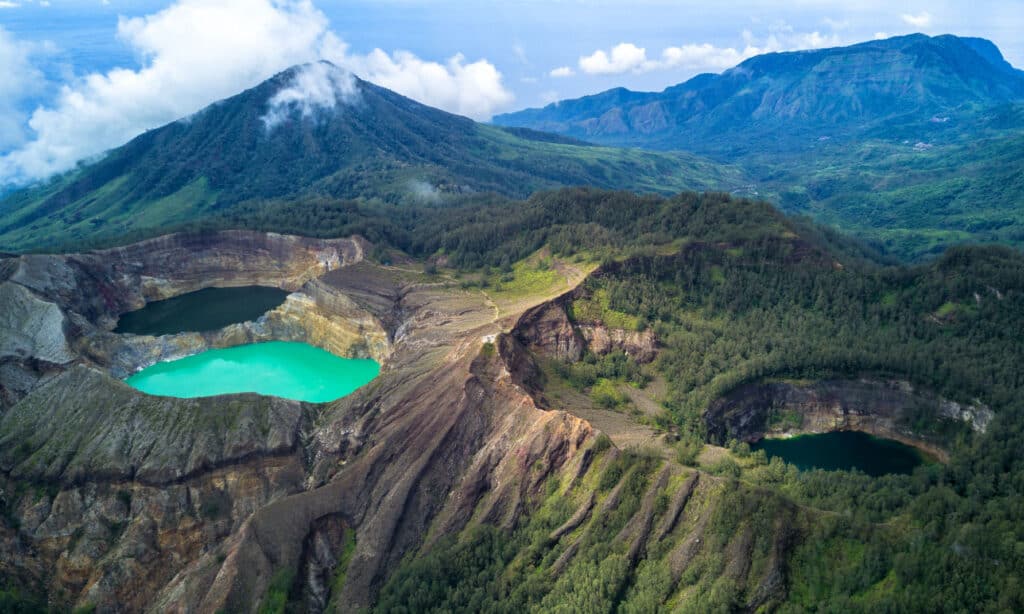
These three crater lakes change to different colors, from blue to bright green to dark brown or red.
©Muhammad Nurudin/Shutterstock.com
The craters of Mount Kelimutu in Indonesia include a unique collection of lakes. As the name suggests, they are unique because the three lakes all shift colors from blue to bright green to dark brown or red. Crater lakes usually change color due to tiny eruptions that alter the chemical structure of the water. Still, these three Indonesian lakes are unique in that they are all connected to the same crater but have distinct colors.
11. Boiling Lake, Dominica

After Frying Pan Lake, Boiling Lake is the second-largest hot lake in the world.
©iStock.com/pabst_ell
Boiling Lake is a fumarole, a hole in the planet’s crust that lets out gas and steam and is hot enough to boil water. The Boiling Lake is located in Dominica, in the Caribbean, and a three- to six-hour climb is required to reach it.
12. Lake Natron, Tanzania
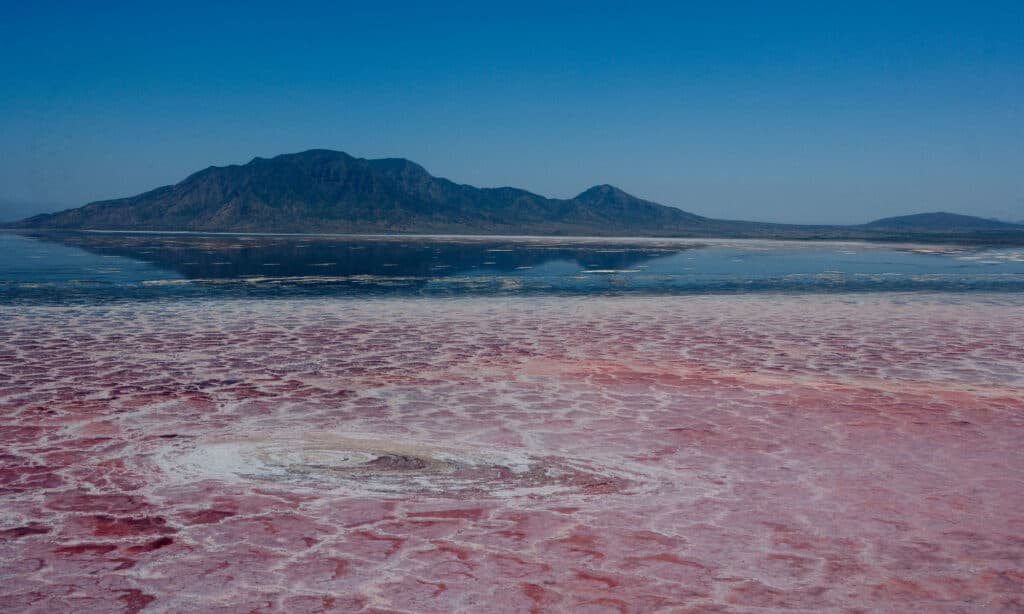
Known to turn animals into stone, Lake Natron is one of the deadliest lakes in the world.
©iStock.com/Mario Faubert
Lake Natron in Tanzania is one of the deadliest lakes in the world, and it isn’t even exploding like the other killer lakes in Africa. It is known to turn animals into stone as calcified animals were found in and around the lake. Most organisms find Lake Natron unpleasant due to its abnormally hot temperatures and high salinity, but particular algae flourish in these utterly salty conditions. However, there’s only one animal species that thrive there: flamingos. Lake Natron gets its color from rusty red cyanobacteria, which also act as a feeding source for local flamingos.
13. Don Juan Pond, Antarctica

The world’s saltiest body of water is Don Juan Pond.
©NASA/Goddard Space Flight Center Scientific Visualization Studio, Landsat 7 Project Science Office; MODIS Rapid Response Team, NASA Goddard Space Flight Center (http://rapidfire.sci.gsfc.nasa.gov) / This file is in the public domain in the United States because it was solely created by NASA. NASA copyright policy states that “NASA material is not protected by copyright unless noted”. (See Template:PD-USGov, NASA copyright policy page or JPL Image Use Policy.) – License
Don Juan Pond or Lake Don Juan reaches a salinity level of 40%, making it the world’s saltiest known body of water. This number is 18 times higher than that of the ocean. The small lake, which was discovered in 1961 and is located in Victoria Land, Antarctica, has a maximum length of 985 feet or 300 meters and a width of 328 feet or 100 meters. Despite being situated in Antarctica, the lake seldom freezes due to its high salt level.
14. Lake Pustoye, Siberia

Lake Pustoye is also known as “the lifeless lake of Siberia.”
©Алексей Петров / Creative Commons – License
Often called the “lifeless lake of Siberia,” this mysterious lake is weird in one way: no life exists in its waters or on its surrounding land. The majority of visitors say that Lake Pustoye is both intriguing and disturbing. Because the lake’s name means “empty,” historians and scientists believe it has never been able to sustain animal life. It has a peculiar chemical composition, which scientists still have trouble figuring out. Any fish that swim into the lake dies, and the trees surrounding the water body wither.
15. Pitch Lake, Trinidad
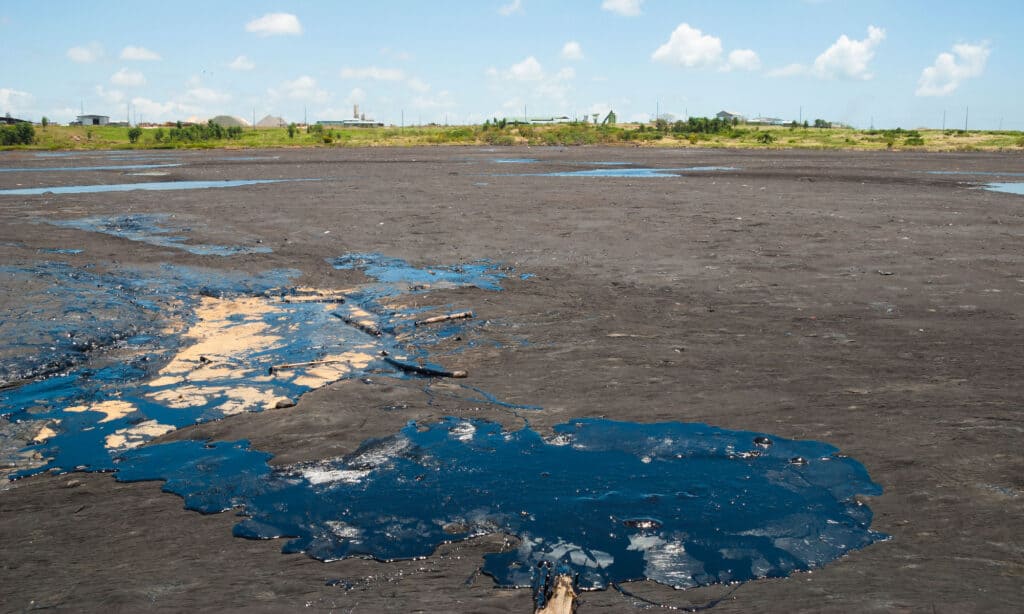
The surface of Pitch Lake, which covers a hundred acres, is hard and soft.
©iStock.com/CircleEyes
Pitch Lake is a natural asphalt deposit, not a typical lake. It sits in Trinidad and was formed thousands of years ago. When the Caribbean Plate moved, it created a reservoir of natural oil. During the plate shift, faults emerged, allowing the oil to resurface. Lighter elements in the oil evaporated when exposed to the sun, leaving asphalt behind. The surface, which covers a hundred acres, is both hard and soft. People are urged to avoid the sticky spots when walking on the hardened portions.
Summary of 15 Most Unique Lakes in the World
Here’s a recap of 15 of the world’s most remarkable and unusual lakes.
| Number | Lake | Location | Unique Aspect |
|---|---|---|---|
| 1 | Dead Sea | Israel and Jordan | World’s lowest lake; water is 10 times saltier than the ocean and has health benefits |
| 2 | Lake Hillier | Australia | Water is vibrant pink |
| 3 | Jellyfish Lake | Palau | Inhabited by millions of golden jellyfish |
| 4 | Exploding Lakes | Democratic Republic of the Congo / Rwanda / Cameroon | Releases explosions that generate a gas cloud, which suffocates humans and wildlife |
| 5 | Crater Lake | Oregon, USA | Waters reputed to be one of the purest on the planet; deepest lake in the U.S. |
| 6 | Spotted Lake | Canada | Mineral deposits make look like a polka-dotted pool in the summer |
| 7 | Lake Kaindy | Kazakhstan | A “sunken forest” with huge spruce trees growing out of its turquoise waters |
| 8 | Lake Baikal | Russia | Deepest lake in the world |
| 9 | Grüner See | Austria | Lake appears only in spring and summer |
| 10 | Tricolored Lakes | Indonesia | Lakes are connected to the same crater but are distinct colors, which change hues |
| 11 | Boiling Lake | Dominica | Second-largest hot lake in the world |
| 12 | Lake Natron | Tanzania | One of the deadliest lakes in the world, known to turn animals into stone |
| 13 | Don Juan Pond | Antarctica | World’s saltiest body of water |
| 14 | Lake Pustoye | Siberia | No life exists in its waters or on its surrounding land |
| 15 | Pitch Lake | Trinidad | Natural asphalt deposit that is hard and soft |
The photo featured at the top of this post is © iStock.com/Mario Faubert
Thank you for reading! Have some feedback for us? Contact the AZ Animals editorial team.






